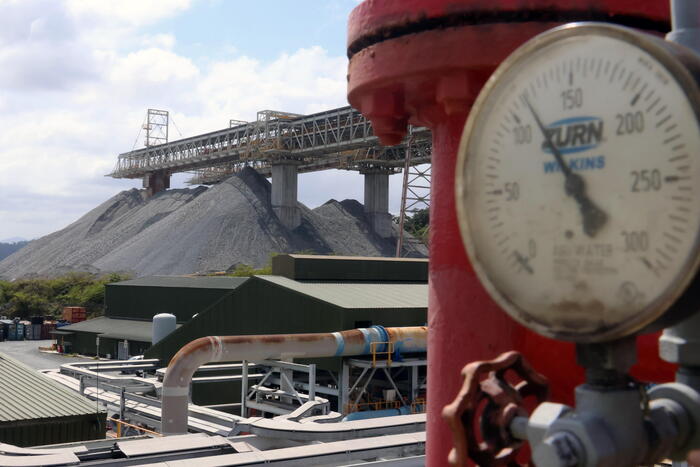Recreation of a data center in Earth orbit.Thales Alenia Space
To big problems, extraordinary solutions.
This is what the European Commission has thought in the face of the exponential increase in computing;
its energy expenditure, which is expected to reach 10% of world consumption;
and the pollution it generates, "4% of greenhouse gases produced by human activity, slightly higher than the global aerospace industry," according to the University of Quebec Higher School of Technology (Canada).
The EU has selected Thales Alenia Space (67% Thales and 33% Leonardo) to study the feasibility of the ASCEND (European Space Cloud for Zero Emission Networks and Data Sovereignty) program.
The objective, included in the Horizon Europe research program, is the installation of data centers in orbit.
“Digital infrastructures as a whole account for a substantial part of energy consumption around the world, with a considerable carbon footprint,” says Sammy Zoghlami, vice president of the Nutanix company.
According to his data, "in Europe, the Middle East and Africa alone, data centers consume more than 90 terawatt hours per year, with a level of emissions equivalent to that generated by some 5.9 million vehicles (27 million tons of CO₂).
Some companies address this problem by turning to carbon-free energy sources.
This is the case of Google Cloud, which will use 149 megawatts of electricity of solar origin from a new photovoltaic park located in Toro (Zamora).
With this resource, it hopes that the Madrid region and the offices in Spain can function in three years at 90% with this type of sources, as the regions of Finland, Iowa, Montreal, Oregon and Toronto are already doing.
Amazon has 13,300 solar panels with the capacity to generate 5.26 megawatts in its logistics center in Seville, the largest installation of the company in Europe.
More information
Pablo Gámez, researcher: "The weight of current technological garbage exceeds that of the Great Wall of China"
But not all data companies have this capability and the industry is growing and demanding more and more.
Faced with this reality, the objective of the ASCEND project is to demonstrate the future capacity of data centers in orbit so that, using solar energy outside the Earth's atmosphere, the carbon footprint of digitization is substantially reduced.
Yves Durand is the director of technologies at Thales Alenia Space, the consortium in charge of studying the feasibility of these space data centers in the next year and a half with the aim of installing them in the first half of the next decade.
Initiatives like Google's are not enough, Durand says: “Most data centers in Europe now use highly carbonized sources.
These infrastructures are large consumers of energy: between 2% and 3% worldwide now and growing twice every year.
They will reach 10% of the global total.
We cannot produce so much carbon-free energy in the face of the tremendous demands, to which will be added, for example, electric cars or hydrogen production, nor can we cover our entire surface area with solar panels”.
His calculations foresee that in 2050 it will not be possible to cover all needs at the current rate of growth in demand, so taking data centers into space, according to him, "seems like a good alternative to the great problem of energy and carbon footprint".
The first big challenge is to build such a large facility in space.
“It is the reason why we have united the main specialists in space infrastructure in a large consortium”, he clarifies.
This group is made up of Carbone 4, VITO, Orange, CloudFerro, Hewlett Packard Enterprise, ArianeGroup, DLR, Airbus Defense and Space and Thales Alenia Space.
“We have brought together the best of each class”, affirms Durán, who explains that among the works to be carried out is optimizing the spatial architecture to find the best model and at an affordable cost.
This, according to the researcher, will be "the equivalent of building a nuclear power plant."
The Spanish Nuclear Society estimates that between 4,000 and 5,000 million euros are needed for these facilities.
The head of technology at Thales Alenia Space believes that it is possible, as the existence of the International Space Station demonstrates, and that its construction will be "without astronauts, completely automatic."
"In fact, the project involves special assembly with robotics," he adds.
The basis is to design a modular center with easy-to-carry electronic packages in a reusable and assembly shuttle.
Communication, unlike terrestrial facilities, will not depend on fiber, but will use optical technology.
energy saving
And only by saving energy in cooling, taking advantage of the low temperatures in the space, will it be possible to avoid enormous consumption.
A significant portion of a data center's energy use goes into cooling equipment.
In some facilities, this item represents more than 50%.
In the orbits of the Earth, the temperature can reach -180ºC in the shadow of our planet.
Ascend's initial goal is to show that this project makes sense, especially if it wants to achieve neutral emissions before 2050. But the implications go further.
These orbital computing centers are a fundamental tool in the upcoming space exploration, with the possible installation of lunar bases or the conquest of Mars.
With these infrastructures, it is no longer necessary to collect data in space, bring it back, and store and analyze it on Earth.
"And also something very important," adds Duran: "We can react much faster if we have processing capacity in space."
A communication between Mars and Earth takes 40 minutes to go and return, so the transmission of critical information requires another model.
Another major challenge is radiation, which affects both the physical components of the system and the computation.
Durand admits that it is a major issue, but explains that there is already a lot of experience with satellite constellations for telecommunications.
quantum computing
The applications that could benefit from these new centers have already been identified, such as computing with neural networks or financial centers, which require great processing capacity.
Also quantum computing, which requires extremely low temperatures and no vibration, something that can be achieved in space.
These centers will be secure, although the eventuality of a cyberattack is always possible because technologies advance both for appropriate uses and for spurious ones.
“We will have to imagine protections that will be different from those used on Earth,” Duran clarifies.
Data centers in space already exist, albeit in very different proportions than those envisioned by the European Commission.
The International Space Station is home to the HPE Spaceborne Computer-2 (SBC-2), the first AI-enabled computing system in space that has already completed 24 research experiments.
The European Space Agency has also launched PhiSat-1, the first satellite with onboard AI processing using Intel's Movidius Myriad 2 chip.
other savings
And it's not just data centers that can help reduce your carbon footprint.
Any use of information obtained from space can help global sustainability.
According to Globant's
Sustainable Business Studio
for Inmarsat, a global mobile satellite communications company, the world could bring decarbonization 10 years faster if industries made the most of existing and emerging space technologies.
In this sense, according to Globant, the full adoption of the available systems would make it possible to achieve a reduction of 11.5% of global emissions in 2030, adding to the current 2.5% savings, 9% from the incorporation of new uses.
For Elena Morettini, lead scientist for the report, "from a technological and scientific point of view, the potential reduction in CO₂ emissions from satellite technologies is immense."
“Definitely,” she adds, “it's not a lack of innovation that prevents further sustainability success, but a lack of investment that gets in the way.”
According to the report, the data provided by the satellites would allow a significant optimization of transport routes, both for passengers and goods, and greater efficiency in the detection of methane emissions.
You can write to us at
rlimon@elpais.es
, follow
EL PAÍS TECNOLOGÍA
on
and
and sign up here to receive our
weekly newsletter
Subscribe to continue reading
Read without limits
Keep reading
I'm already a subscriber

/cloudfront-eu-central-1.images.arcpublishing.com/prisa/ZOGZEHH5DJGGJKFGSFBPZLWUDY.jpg)







